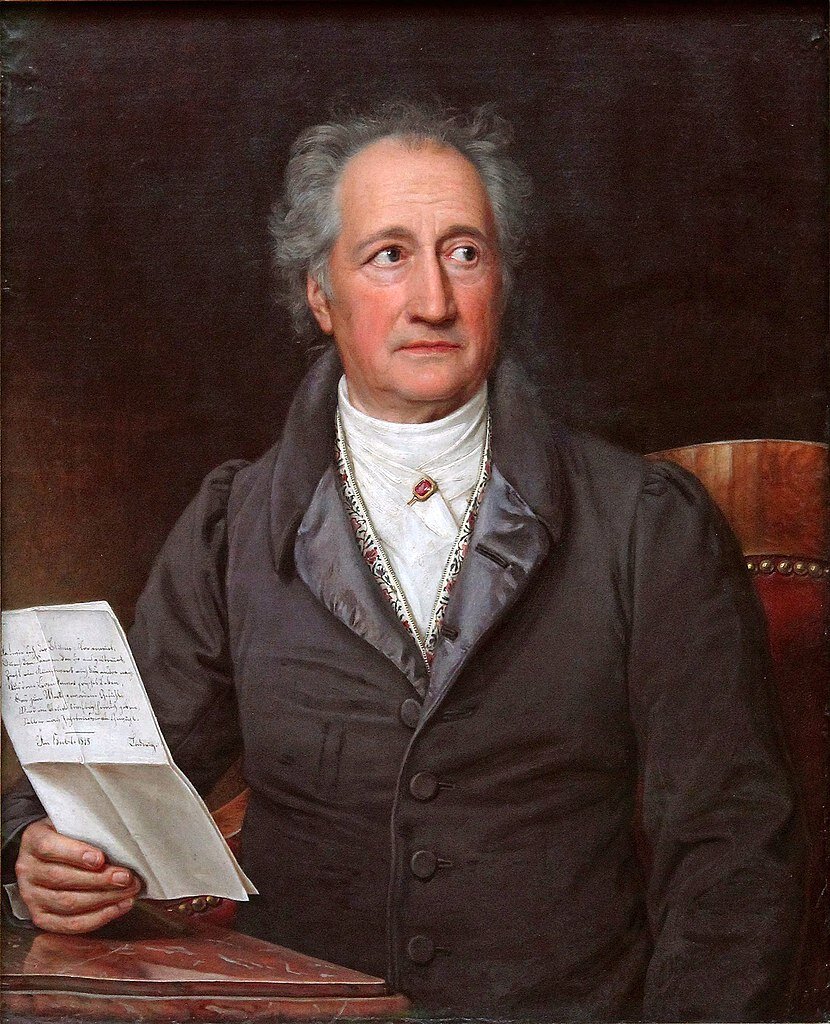20 May 2021
Sometimes the person who has coined a word is not someone you would suspect of doing so. Such is the case with morphology, the study of structure and forms and their relationship to one another. Morphology is used in both biology and linguistics. The coiner of the word, though, is Johann Wolfgang von Goethe, author of the novel Die Leiden des Jungen Werthers (The Sorrows of Young Werther) and the play Faust. While Goethe is most famous for his literary output, he also produced a number of scientific works. He was quite the polymath.
The word Morphologie appears in Goethe’s biological notes in 1796, and it appears in an 1807 published note by him:
Man findet daher in dem Gange der Kunst, des Wissens und der Wissenschaft mehrere Versuche, eine Lehre zu gründen und auszubilden, welche wir die Morphologie nennen möchten.
(One finds, therefore, in the course of art, knowledge, and science several attempts to establish and develop a discipline that we shall call morphology.)
English, however, did not borrow the word directly from the German; French intervened. Morphology first appeared in English in 1828 in a translation of Hippolyte Cloquet’s Traité d’Anatomie Descriptive (Treatise on Descriptive Anatomy):
The numerous organs of which the human body consists, we shall consider principally with reference to the forms which they present, and the mutual relations which they possess; and this view of the subject is what constitutes Descriptive Anatomy, properly so called, which as itself capable of being divided into the Particular Anatomy of Organs, or Morphology, and the Anatomy of Regions or Topographical Anatomy, if we may use the expression; while that part of the science which treats of the structure and properties of the different tissues which are common to several organs, takes the name of General Anatomy or Histology. To the latter belongs the examination of the general characters of all the organs and humours.
Morphology is also used in linguistics, the study of word roots and affixes (i.e., morphemes) and their relationships, as opposed to a word’s phonetic properties. Again, this use of the word first appears in German, in August Schleicher’s 1859 Zur Morphologie der Sprache (On the Morphology of Language):
Den gegenstand der morphologie der sprache bildet die lautliche form des wortes, seine äußere gestalt, d. h. das vorhandensein oder felen seiner teile und die stellung, welche dise teile ein nemen; unberüksichtigt laßen wir das material, auß dem das wort gebildet ist, den klang der zum aufbau desselben verwanten lautelemente.
(The object of study of the morphology of the language is the phonetic form of the word, its external gestalt, i.e., the existence or absence of its parts and the position these parts take; we do not take into account the material out of which the word is constructed, the sound of the phonemes used to construct it.)
That same year, clergyman and philologist Frederic Farrar used morphology and morphological in a series of lectures given at the Royal Institution in March 1859. The lectures were published in 1870. Now, it’s a dirty little secret that the field of linguistics, or philology as it was once known, was established on foundations of nineteenth-century racism and nationalism, an attempt at using language to prove a theory of white supremacy. While the field has moved away from these roots, racist vestiges guiding teaching and research can still be found. Farrar’s lecture, however, presents these abhorrent ideas in raw, unvarnished form. In the following passage, he openly discounts the value of “non-Aryan-Semitic” cultures, and praises the white colonizers for their “heroic” work in studying and preserving those lesser languages:
But while at first the mind may almost seem to sink bewildered before the numberless multitudes of tribes like these—tribes which have contributed nothing to the progress or enlightenment of the human race—tribes which have succeeded others which seem if possible to have been even lower still, and which once covered such colossal spaces of the earth's surface in every stage of nomad unprogressiveness or squalid savagery—yet even here Philology has not resigned her task, and here also she has some of her highest lessons to teach, lessons which have been won in many a year of terrible hardship and perilous fatigue, by many an heroic missionary and intrepid pioneer. And so completely has the earth been traversed over its remotest regions, and pierced to its extremest solitudes, that it is probable that there is no mode of human speech of which, in some of its dialects, we do not now possess vocabularies and specimens. Now no absolute morphological* classification of the non-Aryo-Semitic languages is possible; no firm and definite lines of demarcation can be drawn between the outlying members and debateable lands of the separate linguistic kingdoms.
* By the morphology of a language we mean the general laws of its grammatical structure.
Sometimes word origins come from unexpected directions. It’s no surprise that Goethe coined a word, but the fact that it was morphology is.
Sources:
Cloquet, Hippolyte. A System of Human Anatomy. Robert Knox, trans. Boston: Wells and Lilly, 1830, 2. HathiTrust Digital Archive.
Farrar, Frederic W. Families of Speech: Four Lectures Delivered Before the Royal Institution of Great Britain in March 1859. London: Longmans, Green, 1870, 159–60. HathiTrust Digital Archive.
Goethe, Johann Wolfgang von. Schriften Zur Morphologie II. Stuttgart: J. G. Cotta’sche. 15. Google Books.
Oxford English Dictionary, third edition, December 2019, s.v. morphology, n.
Schleicher, August. Zur Morphologie der Sprache. Mémoires de l’Académie Impériale des Sciences de St. Pétersbourg, series 7, vol. 1, no. 7. St. Petersburg: Eggers, 1859, 1. HathiTrust Digital Archive.
Image credit: Joseph Karl Stieler, 1828, oil on canvas. Neue Penakothek, Munich. Public domain image.

